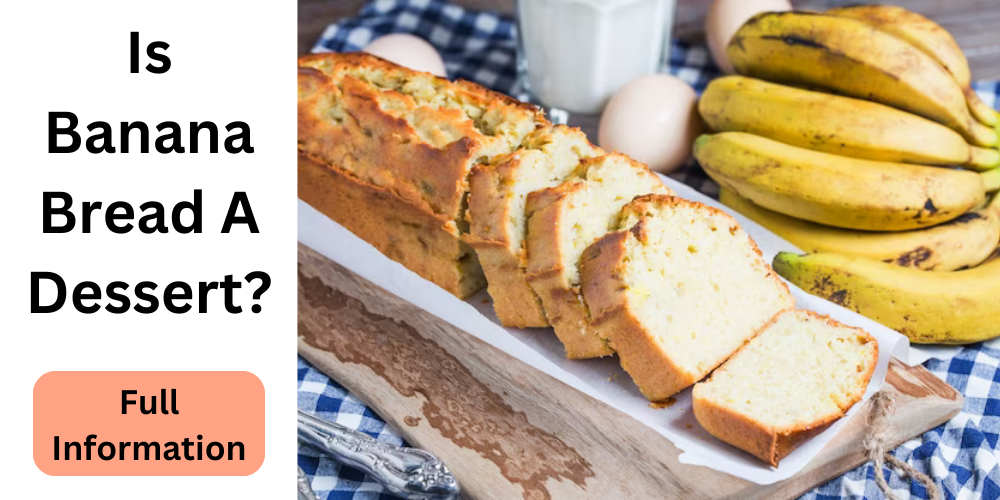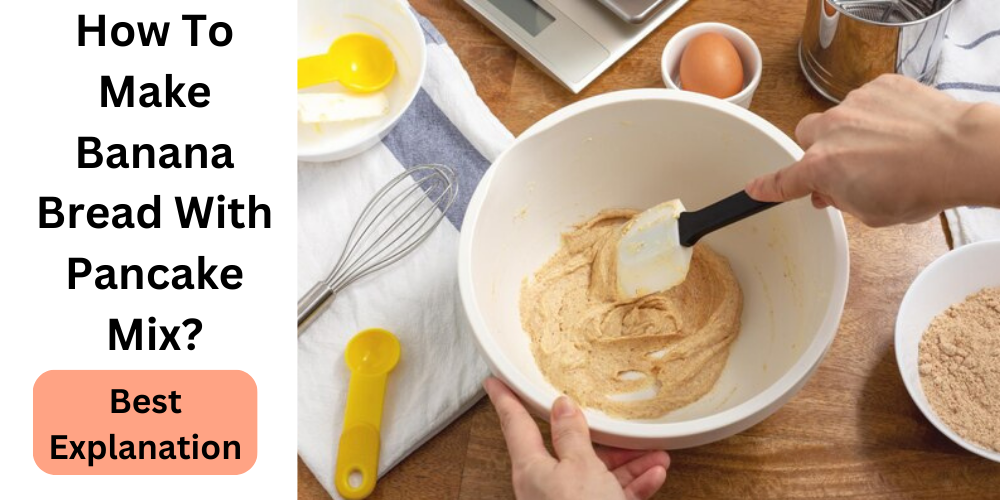If you’ve at any point heated a scrumptious-looking banana bread just to think that it is disappointingly sticky in the center, you’re in good company. Sticky banana bread can be a disappointing kitchen problem, however, dread not – we’re here to unwind the secret and assist you with accomplishing that ideal, clammy, and delicate banana bread you’ve been longing for. Why is my banana bread gummy? In this article, we will investigate the science behind banana bread, the normal reasons for sticky banana bread, elective fixings, and arrangements, and give fundamental tips to guarantee your banana bread ends up perfectly.

Why is My Banana Bread Gummy?
To understand Why is my banana bread gummy. It’s essential to grasp the science behind baking this beloved treat. Banana bread relies on a delicate balance of ingredients, including flour, sugar, bananas, and leavening agents such as baking soda or powder. The key to achieving the right texture lies in moisture and structure.
When bananas are squashed and added to the player, they bring their sweet flavor as well as a lot of dampness. This dampness, when joined with other wet fixings like eggs and oil, makes a delicate and soggy banana bread. Simultaneously, the flour and raising specialists give design and raising, permitting the bread to rise.
Common Causes of Gummy Banana Bread
Now, let’s delve into the main reasons your banana bread might turn gummy.
- Overmixing the Batter
One of the most normal mix-ups in banana bread baking is overmixing the player. At the point when you overmix, the gluten in the flour gets enacted unnecessarily, bringing about a thick and sticky surface. To keep away from this, blend the player until recently consolidated, and it’s okay to have a few lumps.
- Using Overripe Bananas
While overripe bananas are perfect for banana bread, there is a limit. If your bananas are overly mushy and brown, they might contain too much liquid, leading to a gummy texture. Aim for ripe, but not overly ripe, bananas – yellow with a few brown spots is ideal.
- Too Much Moisture
Adding excessive moisture-rich ingredients like yogurt, buttermilk, or extra fruit can make your banana bread gummy. Be cautious about the balance of wet and dry ingredients.
- Incorrect Oven Temperature
Baking your banana bread at some unacceptable temperature can likewise prompt sticky outcomes. Baking at too low a temperature might make it take more time to set and possibly become sticky, while too high a temperature can dry it out.
Alternative Ingredients and Solutions
If you’ve encountered gummy banana bread, don’t despair. There are several alternative ingredients and solutions you can consider to perfect your recipe.
- Greek Yogurt
Substituting some of the oil with Greek yogurt can make your banana bread moister and less likely to turn gummy. It also adds a pleasant tangy flavor.
- Cornstarch
Adding a tablespoon of cornstarch to your dry ingredients can help absorb excess moisture, preventing gumminess.
- Baking Powder
Increase the amount of baking powder slightly. This will help the bread rise more, creating a lighter texture and reducing the chances of it turning gummy.
- Reduce Wet Ingredients
If your banana bread is consistently gummy, consider reducing the amount of wet ingredients like mashed bananas or oil.
- Check Your Oven
Use a stove thermometer to guarantee your broiler is at the right temperature. Baking at the recommended temperature is crucial for achieving the perfect texture.
Tips for Perfect Banana Bread
Achieving the perfect banana bread isn’t just about avoiding gummy textures; it’s also about making it the best it can be. Here are some essential tips for that flawless loaf:
- Quality Ingredients: Utilize the best fixings you can find. New, ready bananas and top-notch flour, eggs, and flavorings make a universe of difference.
- Properly Ripe Bananas: Choose bananas that are just ripe, with a few brown speckles. This balance of sweetness and moisture is ideal.
- Room Temperature Ingredients: Ensure that your eggs, butter, and yogurt are at room temperature. This promotes better mixing and a smoother batter.
- Preheat the Oven: Always preheat your oven to the correct temperature before baking. Consistent heat is crucial for even cooking.
- Use the Right Pan: The type of pan you use can affect the baking time and texture. A metal portion container will cook uniquely in contrast to a glass one, so stay with the dish determined in your recipe.
- Let It Cool: In the wake of baking, permit your banana bread to cool in the prospect for 10-15 minutes before moving it to a wire rack. This forestalls the overabundance of dampness develop.
- Wrap It Up: For ideal surface and flavor, wrap your banana bread in cling wrap or foil and allow it to sit for a couple of hours or short-term before cutting. This permits the flavors to merge and the surface to balance out.
Related Guides:
How Do You Fix Rubbery Banana Bread?
If you’ve already baked banana bread and found it gummy, don’t despair. There are a couple of stunts to rescue it:
- Reheat and Dehydrate: Cut the sticky bread and put it on a baking sheet. Heat it on a low stove (around 250°F or 120°C) for 10-15 minutes to dry out the overabundance dampness.
- Spread the Slices: Lay the cuts in a solitary layer on a wire rack and let them air out for a couple of hours. This can help reduce the gummy texture.
- Toast It: Pop the slices in the toaster or under the broiler until they become slightly crisp. Be careful not to burn them, as overcasting can lead to dryness.
Why did My Banana Bread Come Out Chewy?
Chewy banana bread can result from similar factors as gummy banana bread. Overmixing, overripe bananas, incorrect flour measurements, inadequate baking time, and high moisture add-ins can all contribute to chewiness. To avoid this, follow the tips and alternative ingredient suggestions mentioned earlier.
What Causes Gummy Bread?
Gummy bread is caused by an excess of moisture in the bread, leading to a dense and unpleasant texture. The primary culprits are overmixing the batter, overripe bananas, incorrect flour measurements, inadequate baking time, high moisture add-ins, and incorrect oven temperature.
What to Do If the Banana Bread Batter is Too Thick?
If your banana bread batter is too thick, it can result in a dry and heavy loaf. To remedy this:
- Add Liquid: Gradually add a bit more of a wet ingredient like milk, yogurt, or even more mashed bananas until the batter reaches the desired consistency.
- Thorough Mixing: Make sure to thoroughly mix in the added liquid, but be careful not to overmix, as this can lead to a gummy texture.
Conclusion
In the quest for the perfect banana bread, understanding the potential pitfalls and solutions is key. The question, “Why is my banana bread gummy?” is now demystified. With a grasp of the science behind banana bread and the knowledge of common causes, alternative ingredients, and baking tips, you’re well-equipped to create a banana bread that’s moist, tender, and utterly delicious.
So, embrace your overripe bananas, choose your ingredients wisely, and apply these tips to avoid the dreaded gummy outcome. With a little practice and the right approach, you’ll be baking banana bread that’s a delight to savor with every bite.
Sources:




